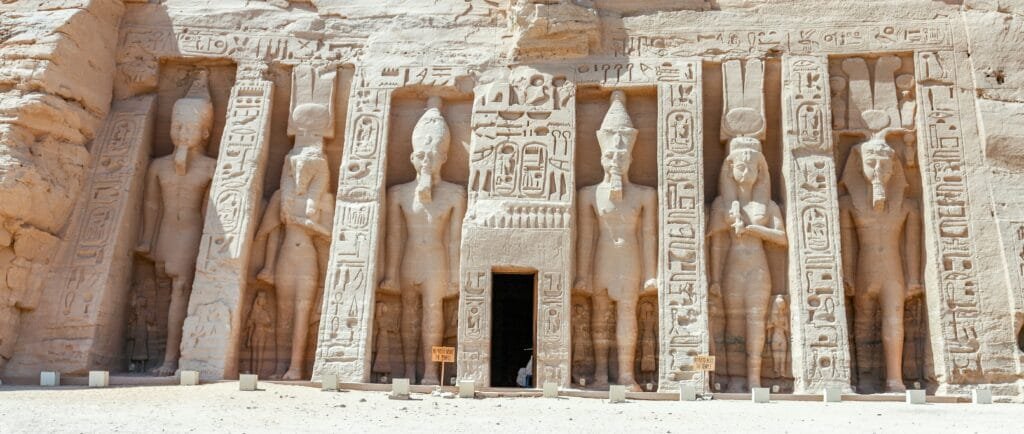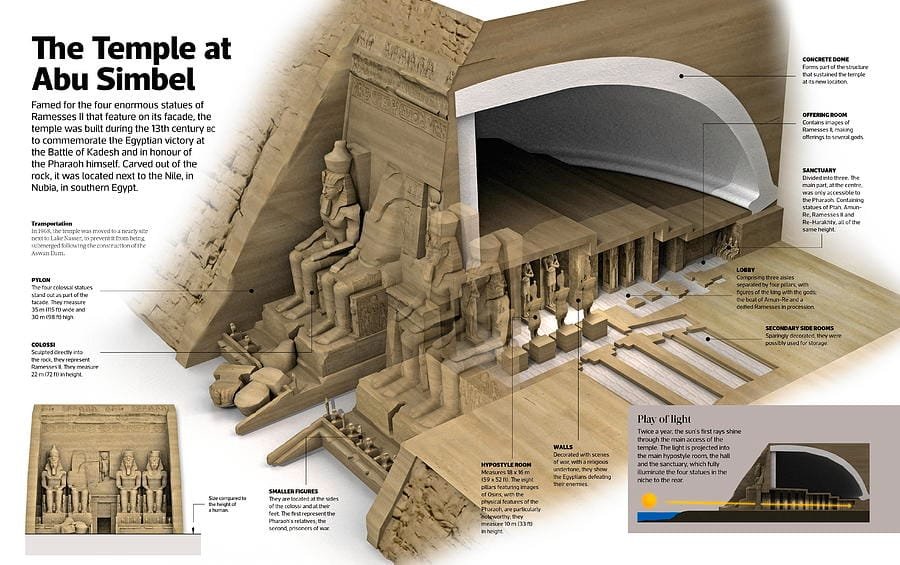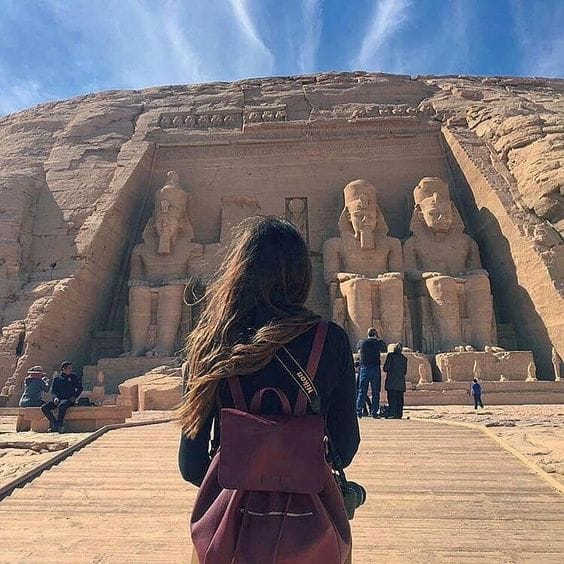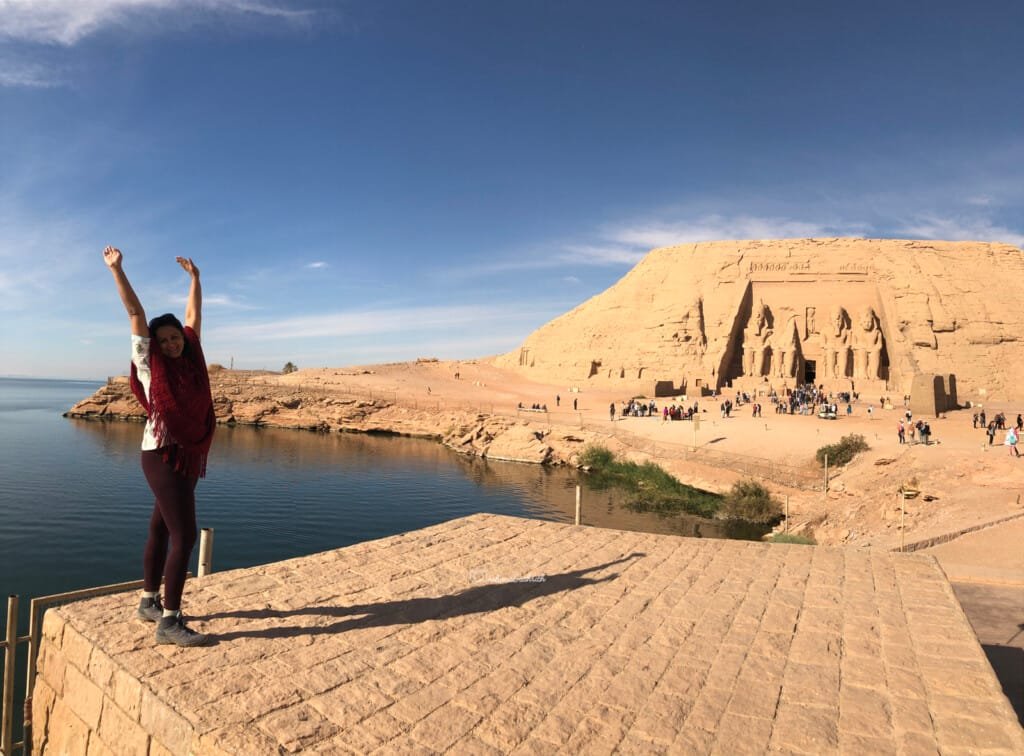Abu Simbel, a majestic site located in the southernmost part of Egypt near Lake Nasser, is one of the most iconic and awe-inspiring archaeological wonders of the ancient world. Comprising two massive rock-cut temples, the site was built by the great pharaoh Ramses II during the 19th dynasty, and it remains a testament to his grandeur, ambition, and divine status. These temples are not only remarkable for their size and architectural beauty but also for the incredible history behind their relocation in the 1960s to save them from flooding caused by the construction of the Aswan High Dam. A guided tour of Abu Simbel with Egypt Tour Magic is the best way to experience the site’s magnificence and learn about its fascinating history.
- Egypt Tour Magic
- Egypt Tour Packages
- Excursions in Egypt
- Cairo Tours and Excursions
- Hurghada Tours and Excursions
- Soma Bay Tours and Excursions
- Makadi Bay Tours and Excursions
- Sahl Hasheesh Tours and Excursions
- El Gouna Tours and Excursions
- Marsa Alam Tours and Excursions
- Port Ghalib Tours and Excursions
- El Quseir Tours and Excursions
- Dendera and Abydos Day Tours
- Aswan Tours and Excursions
- Luxor Tours and Excursions
- Alexandria Tours and Excursions
- Sharm El Sheikh Tours and Excursions
- Top Rated Tours in 2025
- Optional Excursions in Egypt
- Private Transfer
- Blogs About egypt
- Ancient Egypt
- What You Need To know Before Your First Trip To Egypt
- Best Places to Visit in Egypt 2025
- Top Attractions in Red Sea Resorts 2025
- Top 10 Tourist Activities in Egypt
- Top 30 Activities You Can’t Miss in Egypt
- The Guide to Guided Tours in Egypt
- Egypt’s Ancient and Modern History
- The Nile River
- The Deserts of Egypt
- Historical Sites in Egypt
- Cairo
- Alexandria
- Luxor
- Aswan
- The Red Sea
- Dendera Temple
- El Fayoum Oasis
- Bahariya Oasis
- Siwa Oasis
- Al Alamein
- Marsa Matruh
- Ancient Egyptian gods
- famous Egyptian dishes
- UNESCO World Heritage sites
- About Us
- Why Egypt Tour Magic
- Egypt Tour Magic
- Egypt Tour Packages
- Excursions in Egypt
- Cairo Tours and Excursions
- Hurghada Tours and Excursions
- Soma Bay Tours and Excursions
- Makadi Bay Tours and Excursions
- Sahl Hasheesh Tours and Excursions
- El Gouna Tours and Excursions
- Marsa Alam Tours and Excursions
- Port Ghalib Tours and Excursions
- El Quseir Tours and Excursions
- Dendera and Abydos Day Tours
- Aswan Tours and Excursions
- Luxor Tours and Excursions
- Alexandria Tours and Excursions
- Sharm El Sheikh Tours and Excursions
- Top Rated Tours in 2025
- Optional Excursions in Egypt
- Private Transfer
- Blogs About egypt
- Ancient Egypt
- What You Need To know Before Your First Trip To Egypt
- Best Places to Visit in Egypt 2025
- Top Attractions in Red Sea Resorts 2025
- Top 10 Tourist Activities in Egypt
- Top 30 Activities You Can’t Miss in Egypt
- The Guide to Guided Tours in Egypt
- Egypt’s Ancient and Modern History
- The Nile River
- The Deserts of Egypt
- Historical Sites in Egypt
- Cairo
- Alexandria
- Luxor
- Aswan
- The Red Sea
- Dendera Temple
- El Fayoum Oasis
- Bahariya Oasis
- Siwa Oasis
- Al Alamein
- Marsa Matruh
- Ancient Egyptian gods
- famous Egyptian dishes
- UNESCO World Heritage sites
- About Us
- Why Egypt Tour Magic
Guided Tours in Abu Simbel: Exploring the Monumental Legacy of Ramses II
The Great Temple of Ramses II: A Pharaoh's Eternal Legacy
The Great Temple of Ramses II is the centerpiece of Abu Simbel and is one of the most impressive monuments of ancient Egypt. The temple is dedicated to Ramses II, who reigned for 66 years and became one of Egypt’s most powerful and celebrated pharaohs. The entrance to the temple is marked by four colossal statues of Ramses II, each standing an impressive 20 meters (66 feet) tall. These statues are symbolic of his power and divinity, reflecting his self-proclaimed status as both a god and a ruler destined to live forever. A guided tour of the Great Temple will provide in-depth insights into Ramses II’s reign and the significance of the temple’s design. Your expert guide will explain the symbolism behind the statues and the temple’s architecture, which was designed to awe and inspire all who visited. Inside the temple, you’ll find beautifully preserved reliefs and carvings that depict Ramses II’s military victories, religious devotion, and his divine connection with the gods. One of the most notable features of the temple is its alignment with the sun. Twice a year, the sunlight illuminates the inner sanctum, bathing the statues of Ramses II and the gods in light, a phenomenon that continues to draw attention from visitors and researchers alike. Visiting the Great Temple with Egypt Tour Magic provides a deeper understanding of how Ramses II sought to immortalize himself through monumental structures and how his influence shaped the future of Egypt. Your guide will also delve into the story of the temple’s relocation, a remarkable feat of engineering and international cooperation that preserved one of Egypt’s greatest treasures.

The Small Temple of Nefertari: Devotion to the Queen
The Small Temple at Abu Simbel is dedicated to Ramses II’s beloved queen, Nefertari, and is equally magnificent in its own right. Unlike the Great Temple, which is centered on Ramses II’s divine authority, the Small Temple celebrates Nefertari’s status as a revered queen and the pharaoh’s equal in both power and devotion. The temple’s façade features six towering statues, with Ramses II seated beside Nefertari, symbolizing their equal standing before the gods. These statues are remarkable for their grace and elegance, showcasing the queen’s prominent role in the Egyptian royal family. During a guided tour of the Small Temple, your Egypt Tour Magic guide will take you through the temple’s artistic and architectural details, emphasizing the deep connection between Ramses II and Nefertari. The interior of the temple is adorned with vibrant reliefs depicting both royal figures making offerings to the gods, as well as scenes from their daily lives. What makes this temple so special is its depiction of Nefertari in an equal role to the king, which was rare in ancient Egypt. This highlights the unique relationship between Ramses II and Nefertari, one that transcended traditional gender roles in ancient Egyptian society. As you explore the Small Temple, you will gain a deeper appreciation for Nefertari’s importance in ancient Egyptian history and how the temple served as a testament to her power, beauty, and devotion. The intimate scale of the Small Temple, paired with the grandeur of the larger monument, provides a balanced and complete picture of the royal family’s influence in ancient Egypt.

The Relocation of Abu Simbel: A Triumph of Engineering and Preservation
One of the most fascinating aspects of the Abu Simbel temples is the incredible story of their relocation in the 1960s. The construction of the Aswan High Dam created a threat to the temples as Lake Nasser began to rise, putting these irreplaceable monuments at risk of being submerged. To preserve them for future generations, an international effort led by UNESCO mobilized a team of engineers and archaeologists to carefully cut the temples into large blocks and move them to higher ground. A guided tour with Egypt Tour Magic will not only introduce you to the temples’ grandeur but also to the story behind this historic relocation. Your guide will explain the intricate planning and immense effort required to move the temples, a feat that took several years to complete. The temples were carefully dismantled, numbered, and reassembled on a plateau 64 meters (210 feet) higher and 200 meters (656 feet) away from their original location. The relocation project is considered one of the greatest achievements in the history of archaeological preservation. Understanding this incredible feat of preservation adds a deeper layer of appreciation to your visit to Abu Simbel. The temples’ relocation allowed them to be saved from the rising waters of Lake Nasser and ensures that they remain a lasting symbol of ancient Egypt’s architectural brilliance. During your tour, you will hear about the challenges faced by the engineers and the cooperation between Egypt and international organizations to safeguard the monuments for future generations.
The Sound and Light Show: A Magical Evening Experience
One of the most unforgettable experiences at Abu Simbel is the Sound and Light Show, which takes place in the evening at the temples. This spectacular show uses music, narration, and lighting effects to bring the history of Ramses II and Nefertari to life. The show takes place against the backdrop of the massive statues, with the dramatic lighting highlighting the temple’s grandeur and making it appear almost otherworldly. Your guided tour of Abu Simbel with Egypt Tour Magic will offer the opportunity to experience the Sound and Light Show, which adds a magical touch to the already impressive site. As you sit in front of the Great Temple, the show narrates the story of Ramses II’s reign, his building projects, and the divine connections he sought to establish. The dramatic lighting of the statues and the soft music enhance the sense of awe that visitors feel when standing before these monumental structures. The Sound and Light Show at Abu Simbel provides a unique and immersive way to experience the history and mythology surrounding the temples. It’s a truly memorable way to conclude your visit to Abu Simbel, leaving you with a sense of wonder and appreciation for the achievements of ancient Egypt.

The Cultural Significance of Abu Simbel: A Symbol of Egypt’s Ancient Power
Abu Simbel is not just a monumental feat of architecture and engineering, but it also holds immense cultural significance for Egypt. The temples are a representation of Ramses II’s political power, religious devotion, and his desire to create a lasting legacy for his reign. The Great Temple, dedicated to Ramses II himself, is designed to reflect his divine power and eternal rule. The towering statues at the entrance are an imposing reminder of the pharaoh’s god-like status, symbolizing his dominance over both his enemies and the gods. Each of these colossal statues was carefully placed to create a grand and dramatic entrance, reinforcing the message that Ramses II was the supreme ruler of Egypt, divinely chosen to lead the nation into an era of prosperity and strength. Inside the Great Temple, the walls are covered in intricate carvings and reliefs that depict the Pharaoh’s military victories, including the famous Battle of Kadesh, one of the most significant events in Ramses II’s reign. These depictions not only highlight the king’s victories but also served to strengthen his divine image by connecting him to the gods through these monumental acts. Through this artistic representation, Ramses II wanted to ensure his place in Egyptian history as a ruler whose reign brought peace, stability, and prosperity to Egypt. On a guided tour with Egypt Tour Magic, you’ll gain a deeper understanding of the cultural and political implications of these monuments. Your expert guide will take you through the symbolism embedded in the artwork and explain how Abu Simbel served as a symbol of Egypt's might, both in terms of power over its people and its lasting legacy across millennia. The temples’ grandeur represents not only the physical strength of Egypt but also its cultural and spiritual resilience, reinforcing Egypt’s position as a dominant power in the ancient world.

Abu Simbel's Connection to Egyptian Architecture and Monumental Art
Abu Simbel is one of the finest examples of Egyptian monumental architecture, showcasing the extraordinary skill and craftsmanship of ancient Egyptian builders and artists. The grandeur of the temples is a reflection of the advanced architectural techniques developed during the reign of Ramses II. The rock-cut temples were meticulously designed and carved into the cliffs along the Nile, an incredible feat considering the scale and precision required to create such massive structures. The temples at Abu Simbel are notable for their use of the natural landscape as a backdrop for their architecture. The Great Temple, in particular, is a masterclass in aligning architecture with the surrounding environment. The precision with which the temple is designed to be illuminated by the sun twice a year is a remarkable achievement of ancient engineering. On the 22nd of February and the 22nd of October, the sun’s rays penetrate the inner sanctuary, illuminating the statues of Ramses II and the gods of Egypt, symbolizing the king’s divine connection to the heavens. This solar alignment is a testament to the ancient Egyptians’ profound understanding of astronomy and their ability to integrate such knowledge into their monumental designs. A guided tour of Abu Simbel with Egypt Tour Magic provides visitors with a unique opportunity to explore the ingenuity behind these architectural wonders. Your guide will explain how the construction of the temples required advanced techniques in stone carving and precision, as well as how the ancient Egyptians employed detailed planning to align the structures with celestial events. You will learn about the art and craftsmanship involved in creating the intricate reliefs inside the temples, many of which depict scenes of divine rituals, royal victories, and other important events in Ramses II’s life.




